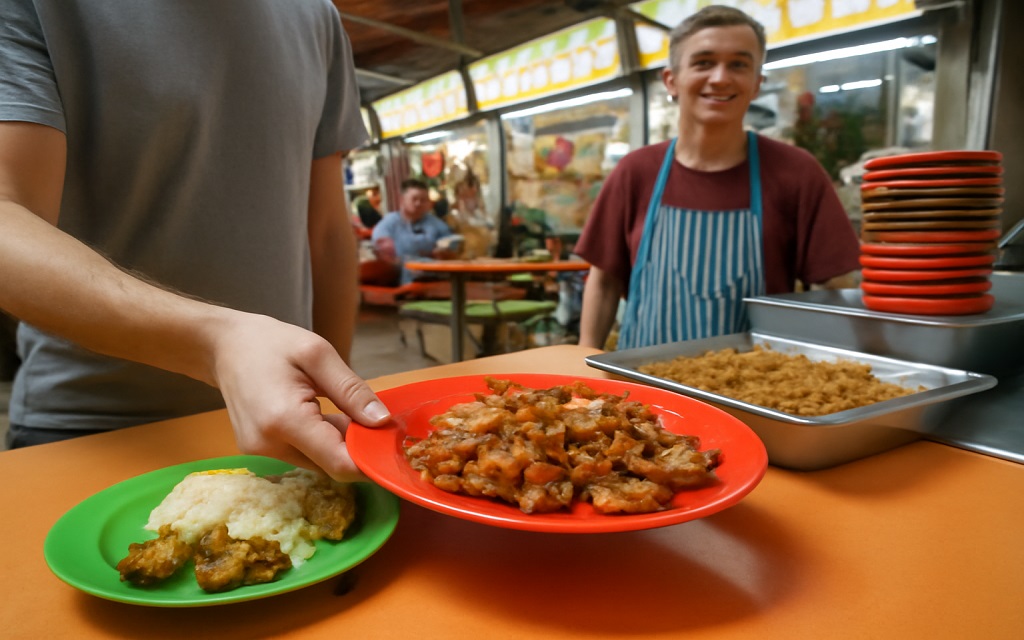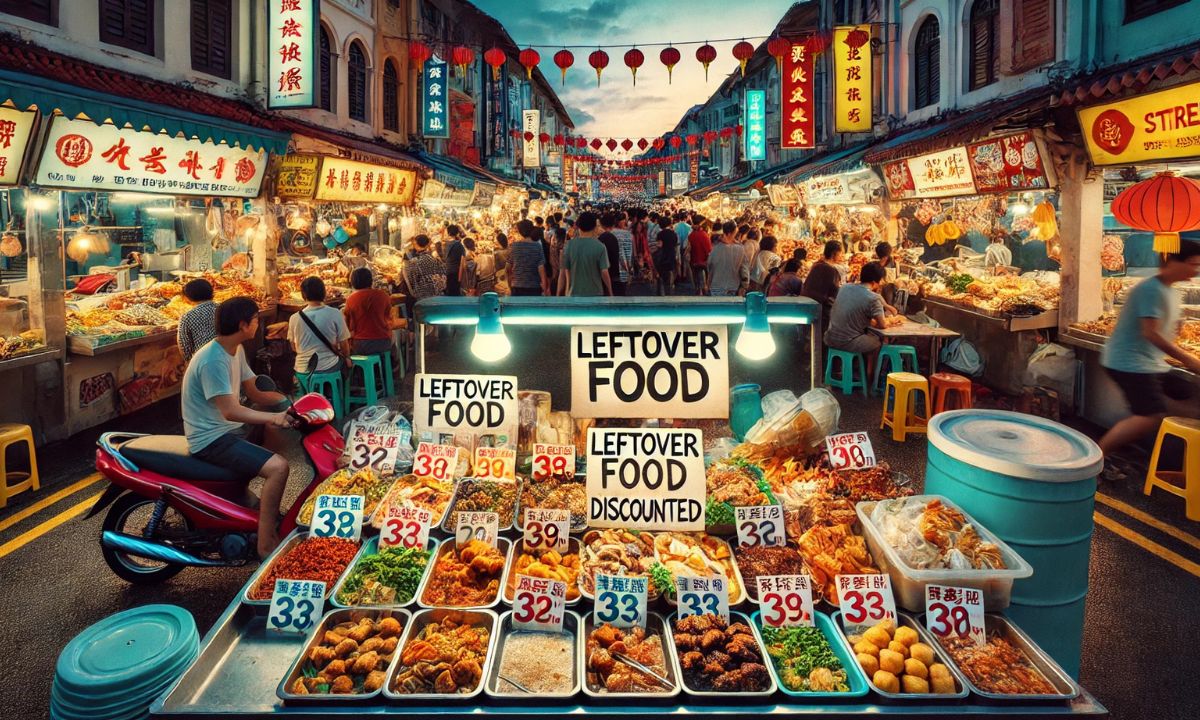People know Chinatown hawker shops for their lively food scenes and cheap meals. Locals and tourists come for flavour-packed dishes and a quick bite. But there’s something else happening behind the scenes—something that’s quietly making a difference. Some vendors offer leftover food at reduced prices. To many, that might sound unusual. However, eating leftovers in these settings has social, environmental, and economic value. It’s not just about spending less—it’s about helping reduce waste, supporting local stall owners, and making meals more accessible to people who need them. Let’s dive deeper into Chinatown hawker leftovers consumption.
Cutting Food Waste, One Meal at a Time

Food waste is a serious worldwide problem. Millions of tonnes of edible food are disposed of in landfills every year. As that garbage decomposes, methane, a greenhouse gas much more dangerous than carbon dioxide, is released. This indicates that all the resources that went into growing, shipping, and preparing that food were squandered.
Vendors in Chinatown’s hawker centres use an inventive approach. Ultimately, many provide unsold food at a reduced price rather than discarding it. These are still delicious and very safe meals. Purchasing them has a significant impact since it keeps food out of the trash.
Every leftover dish eaten reduces the number of dishes added to landfills. It also reduces the pressure on the food system to produce more than we consume. It’s a practical way to fight a massive problem on a small scale.
Helping Vendors Stay Afloat
Running a hawker stall isn’t just about cooking—it’s a tricky business. Vendors deal with tight margins, unpredictable demand, and rising costs. When food doesn’t sell, they lose money. And that adds up, especially for small, family-run stalls.
Selling leftovers helps ease that pressure. Instead of losing income on unsold items, vendors can recover part of their costs. For many, it’s a simple way to stretch earnings and stay competitive in a busy market.
And from your side, you still get a delicious meal at a lower price. This exchange benefits both sides. You save money, and the vendor avoids waste and loss. It’s a practical, sustainable model that strengthens the local food economy.
Making Food More Accessible
Not everyone who strolls through the busy alleys of Chinatown is there to indulge. Many are low-income families, students, older people, or working-class members struggling to make ends meet. Even a simple hawker dinner may be considered a luxury for them.
Food leftovers fill that void. When sellers provide inexpensive meals, people who may otherwise go hungry or skip meals completely are given the opportunity to eat. A $4 bowl of noodles might suddenly cost $2. For someone on a limited budget, that makes a big impact.
This goes beyond affordability. It has to do with inclusion and decency. Everybody should have access to a hot, wholesome meal. By encouraging leftover sales, you contribute to developing a system that allows more people to savour the flavours. Many are low-income families, students, older people, or working-class members struggling to make ends meet. Even a simple hawker dinner may be considered a luxury for them.
A Small Step Toward Sustainability
Buying a leftover meal may not feel like activism, but it is. Every time you choose that option, you reduce the demand for freshly made (and potentially wasted) food. That helps conserve ingredients, packaging, water, energy, and transportation resources.
Think about it this way: the fewer meals we waste, the fewer new ones need to be made unnecessarily. And if you bring your container, you eliminate even more waste—no single-use boxes, no extra plastic. It’s a low-effort, high-impact choice.
These everyday actions add up. When enough people adopt sustainable habits like this, change happens. Food systems become more efficient, waste shrinks, and environmental impact lessens. It all starts with one meal.
It’s Also About Culture
Eating leftovers is hardly a novel habit. Food has profound cultural significance in China. Wasting it is regarded as insulting, not just to the chef but also to the environment and hungry people. Meals are seen as presents that should be thoroughly enjoyed.
That mindset still shapes eating habits today. At a hawker booth, selecting a leftover dish is sensible and cultural. It embodies virtues like humility, attentiveness, and thankfulness. It demonstrates regard for food, work, and customs.
When you decide to eat these foods, you engage with that culture. You uphold a common belief that food is valuable and that no delicious meal should be wasted.
Building a Stronger Community
Leftover meals benefit individuals and help communities. Some food banks or community refrigerators collaborate with hawker vendors. They provide food to those in need rather than discarding it. Others set up unofficial gatherings for locals to share meals.
In addition to fostering a sense of belonging that is sometimes lacking in hectic city life, these activities enable neighbours to support one another and promote trust and collaboration.
Choosing to purchase from suppliers who engage in these behaviours helps to cement those ties to the community. Not only are you enjoying a cheap dinner, but you’re also becoming a part of a supportive network.
What Gets in the Way?
Even with all the benefits, leftover consumption has some hurdles. The biggest is perception. Some worry it’s unsafe, and others feel embarrassed about eating “old” food. But most of these fears are based on assumptions, not facts.
Hawker centres in places like Singapore are regulated. Vendors are trained in food safety. Leftovers are appropriately stored and sold within safe time windows. These aren’t scraps from someone else’s plate—they’re unsold dishes from the day, still fresh and carefully handled.
Changing how people see leftovers starts with honest conversations. When people understand the facts, they’re more open to trying it—and even spreading the idea to others.
What You Can Do
You don’t need to start a campaign. Small choices make a big difference. Next time you’re at a hawker centre, ask if any vendors offer leftover meals. If they do, give it a try.
Bring your container. Say thank you. Let others know it was great.
Support vendors who take the initiative to sell or share leftovers. Post about your experience. Encourage friends to follow your lead. If more people normalize it, the social stigma disappears—and the impact grows.
Conclusion: Why Chinatown Hawker Leftovers Consumption Matters
In short, saving a few bucks isn’t the only reason to eat at Chinatown Hawker leftovers consumption centres. It’s a good deed that benefits small businesses, the environment, and those needing inexpensive meals.
It’s also a traditional way of showing appreciation for community, food, and labour.
Making this decision contributes to developing a more creative, sustainable eating pattern. Additionally, you demonstrate to others that responsible, considerate behaviours don’t have to be complicated or tedious; they can be tasty, economical, and empowering.
Read More: Çeciir: A Turkish Flatbread Rooted in Culture and Flavor

